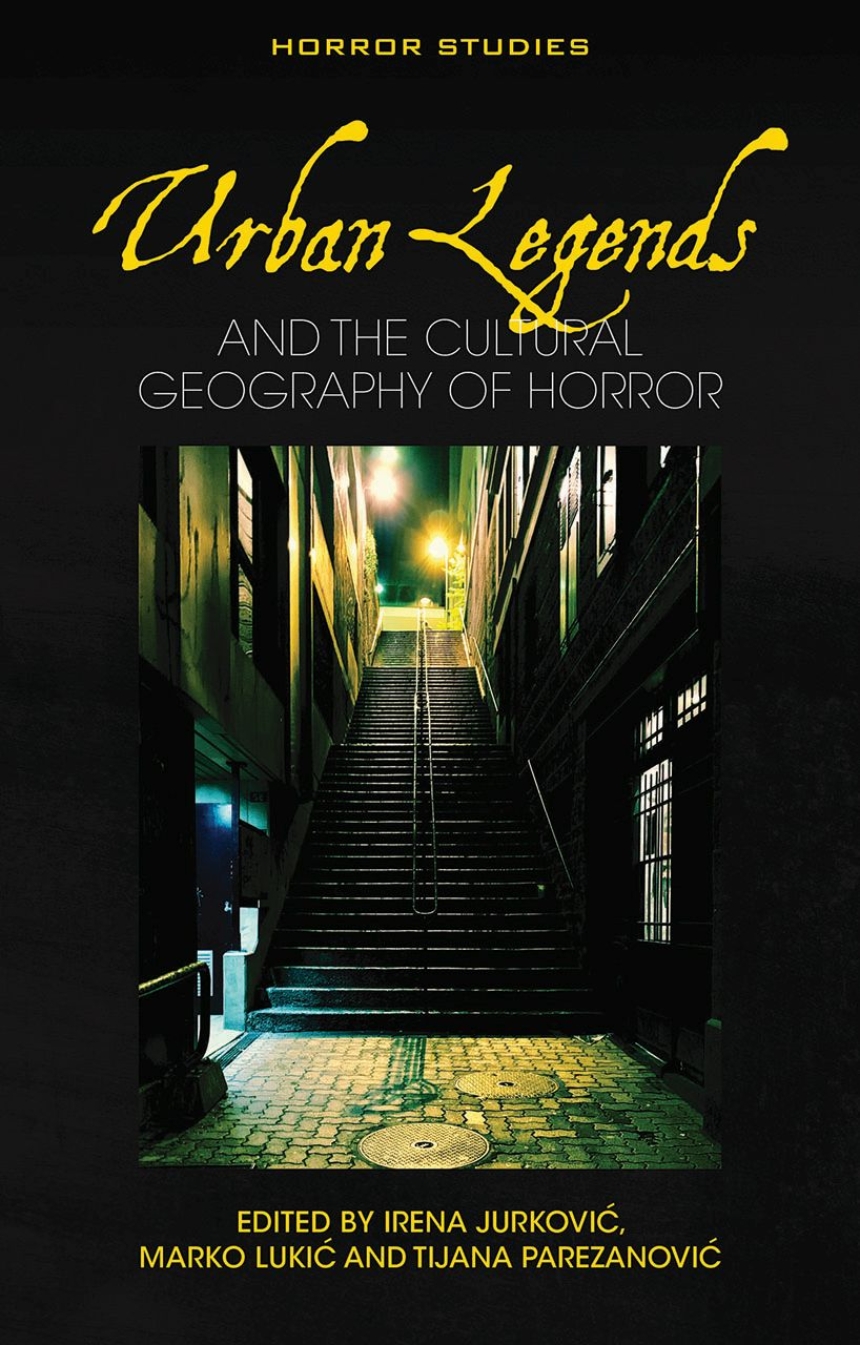Explores the particular significance of the physical spaces that are haunted by urban legends.
Blending folklore studies, media theory, horror criticism, and cultural geography, this collection charts an unprecedented map of urban-legend storytelling, from haunted cemeteries to pixelated backrooms. Across three themed sections, international scholars trace how tales of hook-handed killers and countless other specters migrate through oral tradition, cinema, television, board games, and video games, to continually reshape the fears and identities of the communities that share them. By foregrounding space—the cemetery, the highway, the small town, the livestreamed haunted house—as a dynamic agent rather than passive backdrop, this book reveals how legends build cultural memory, police social boundaries, and critique neoliberal landscapes. Interdisciplinary, globally-scoped, and media-agnostic, Urban Legends: and the Cultural Geography of Horror moves beyond folkloric catalogues and genre surveys to show precisely where horror lives today—and why those locations matter.
Blending folklore studies, media theory, horror criticism, and cultural geography, this collection charts an unprecedented map of urban-legend storytelling, from haunted cemeteries to pixelated backrooms. Across three themed sections, international scholars trace how tales of hook-handed killers and countless other specters migrate through oral tradition, cinema, television, board games, and video games, to continually reshape the fears and identities of the communities that share them. By foregrounding space—the cemetery, the highway, the small town, the livestreamed haunted house—as a dynamic agent rather than passive backdrop, this book reveals how legends build cultural memory, police social boundaries, and critique neoliberal landscapes. Interdisciplinary, globally-scoped, and media-agnostic, Urban Legends: and the Cultural Geography of Horror moves beyond folkloric catalogues and genre surveys to show precisely where horror lives today—and why those locations matter.
224 pages | 5.43 x 8.5 | © 2026
Literature and Literary Criticism: General Criticism and Critical Theory
Table of Contents
Introduction
Urban Legends and Haunted Places
Grave Implications: The Richmond Vampire Legend and Cultural Revision Aíne Norris
Sacrifice Zones: Uncanny Geography and Spectrality in’Butcher’s Block’ Steven Kohm and Meg D. Lonergan
Geography and Supernatural Beliefs in Demian Rugna’s Horror Cinema Fernando Gabriel Pagnoni Berns and Canela Ailen Rodriguez Fontao
Urban Legends Across Spaces
A Cultural Geography of Paranoia in the 1990s US. Monsters of the Week, Urban Myths, and Conspiracy Theories in The X-Files Ilaria W. Biano
‘The Family Business’: Mobility and Patriarchy in the CW’s Supernatural Helen Pinsent
Rolling the Dice and Navigating Legends: Mixtape Massacre and Escape from Tall Oaks Alissa Burger
Urban Legends About and Within Digital Spaces
The Art of No-Clipping—Backrooms and Digital Horror Narratives Marko Lukic
‘He is Dying for Followers’: The Abject Workspace and the Co-Modification of the Urban Legend in Deadstream Victoria Santamaría Ibor
The Omnipresent Dread and Spatial Displacement in the Horror Video Game Killer Frequency Zlatko Bukac
Bibliography
Notes
Urban Legends and Haunted Places
Grave Implications: The Richmond Vampire Legend and Cultural Revision Aíne Norris
Sacrifice Zones: Uncanny Geography and Spectrality in’Butcher’s Block’ Steven Kohm and Meg D. Lonergan
Geography and Supernatural Beliefs in Demian Rugna’s Horror Cinema Fernando Gabriel Pagnoni Berns and Canela Ailen Rodriguez Fontao
Urban Legends Across Spaces
A Cultural Geography of Paranoia in the 1990s US. Monsters of the Week, Urban Myths, and Conspiracy Theories in The X-Files Ilaria W. Biano
‘The Family Business’: Mobility and Patriarchy in the CW’s Supernatural Helen Pinsent
Rolling the Dice and Navigating Legends: Mixtape Massacre and Escape from Tall Oaks Alissa Burger
Urban Legends About and Within Digital Spaces
The Art of No-Clipping—Backrooms and Digital Horror Narratives Marko Lukic
‘He is Dying for Followers’: The Abject Workspace and the Co-Modification of the Urban Legend in Deadstream Victoria Santamaría Ibor
The Omnipresent Dread and Spatial Displacement in the Horror Video Game Killer Frequency Zlatko Bukac
Bibliography
Notes

